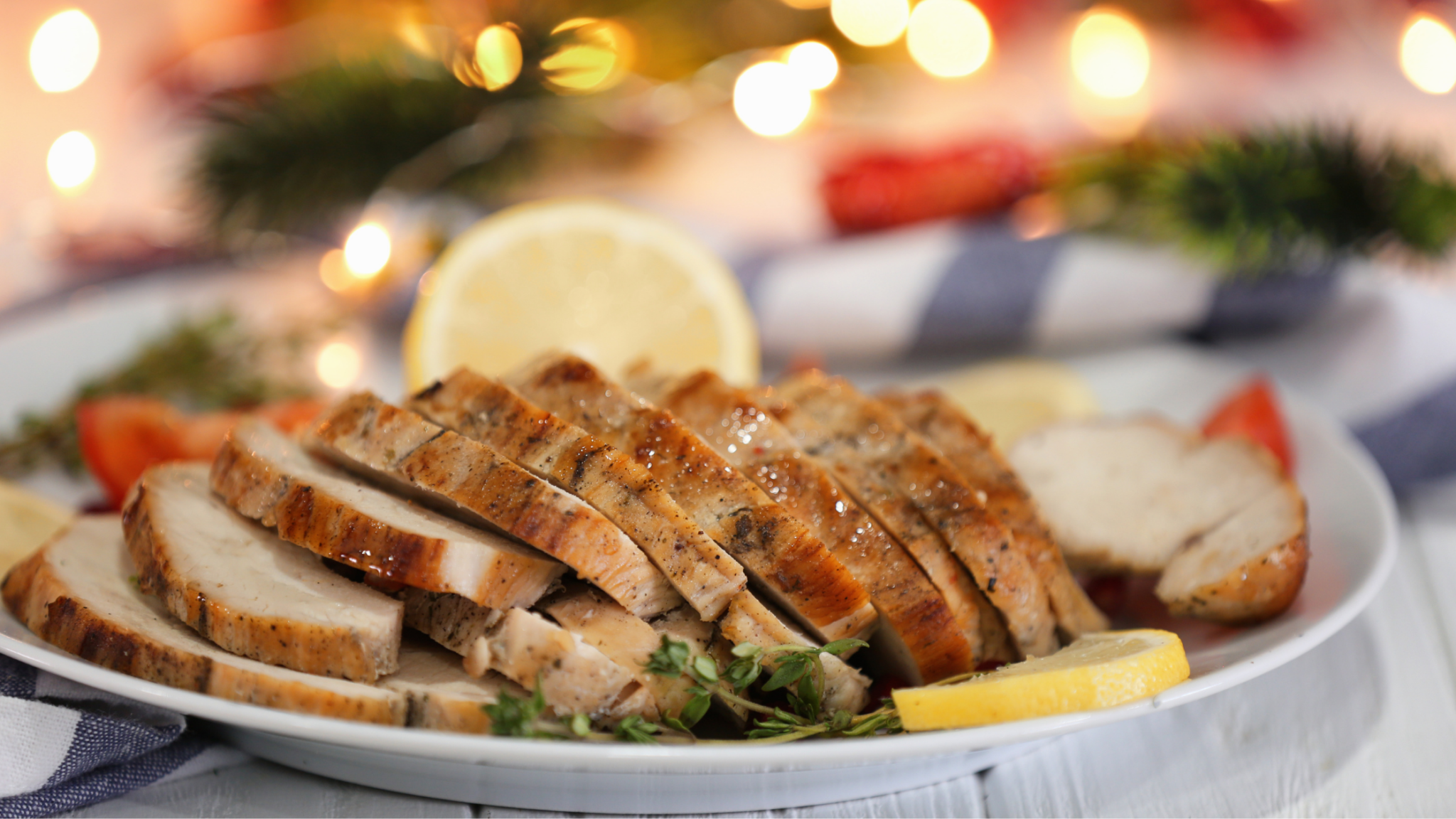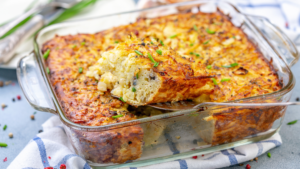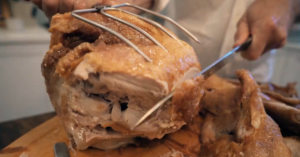Cooking a turkey is one of those things that seems like something you watched your mom and grandmother do exclusively. Then one day, you wake up and you’re 40-something and realize you’ve never done it before on your own. It’s 2020, mid-pandemic, and ain’t no mom or grandma around to help. You’re on your own, kid.
Around Thanksgiving, I laughed with a friend over the phone as we shared memories of the first time we’d ever cooked a large bird. For a first timer, it can be intimidating and a bit gross. Then my friend told me a story about the best turkey she ever made once upon a time in New York City. Somehow a foreign ambassador was invited to join them for dinner in her home. She died thinking about this ambassador and his lovely wife eating dinner ON THEIR LAPS. (There was not a table in sight in her 750 square foot apartment on 74th Street. Bless.)
After a small panic attack about how wildly inadequate her offerings would be, my friend decided to get creative and go all in on the meal. She planned a Roasted Citrus Turkey. To this day, she swears it was the best turkey she had ever eaten. Naturally, I begged her for the recipe.
When Life Hands You Lemons
She has modified her Roasted Citrus Turkey recipe over the years, and now she uses a dry brine and a roasting technique inspired by Ina Garten. The dry brine is SO much easier than a giant, sloshy bag of water and salt in your fridge for days. Experiment with the recipe for a turkey breast only or a small chicken, adjusting your quantity for size. Here’s hoping that when you make this, you create vivid memories with those you share it with.
Roasted Citrus Turkey
The following recipe and quantities are for a 12-14 lb turkey. For a 20 lb turkey I would increase salt by 1 tbsp., lemon zest by ½ extra lemon and thyme by 1-2 additional teaspoons. For the roasting, I’d add another ½ stick of butter.
Step 1: Dry Brine Ingredients & Process
- 3 tbsp Kosher salt
- 1 tbsp minced fresh thyme leaves
- Grated zest of 1 lemon
Three days before roasting turkey, combine 3 tbsp of salt with minced thyme and lemon zest. Wash turkey inside and out, remove giblets and drain well and pat down with paper towels. Sprinkle 1 tbsp of salt mixture in cavity of the turkey and rub the rest all over the skin, including under wings and legs. Place turkey in shallow dish and cover tightly with plastic wrap. I wrapped the bird itself all the way around and then the dish as well just to ensure that salt was staying in its place.
After two days, remove the plastic wrap and allow turkey to air dry in the fridge. This allows the skin to dry out and turn slightly translucent. If you don’t have this much time, you can brine for just one day and air dry for the second day, but the full time really made it great.

Step 2: Roast the Turkey
- ¼ lb (1 stick) butter, softened
- 1 lemon zested
- 1 teaspoon fresh thyme, chopped
- Salt
- Pepper
- 1 large bunch fresh thyme
- 1 whole lemon, halved
- 1 onion, quartered, skin on
- 1 head garlic, halved crosswise, skin still on
Preheat oven to 350 degrees. Remove turkey from fridge. During the brining process, it will have released juices in the pan – no need to drain those or wipe the turkey at all. Combine softened butter with fresh thyme and lemon zest. Rub all over turkey, including under legs and wings. To the cavity, add fresh salt and pepper, the thyme, halved lemon, onion and garlic. Tie the legs together with kitchen string and either tuck the wings under the body or tie as well. Roast on 350 degrees for approximately 15 minutes per pound. Test that the turkey is done when it reaches 160 degrees internal temperature and the juices run clear.

If you make this, please tell us how it turns out! We’d love to hear from you in the comments.




